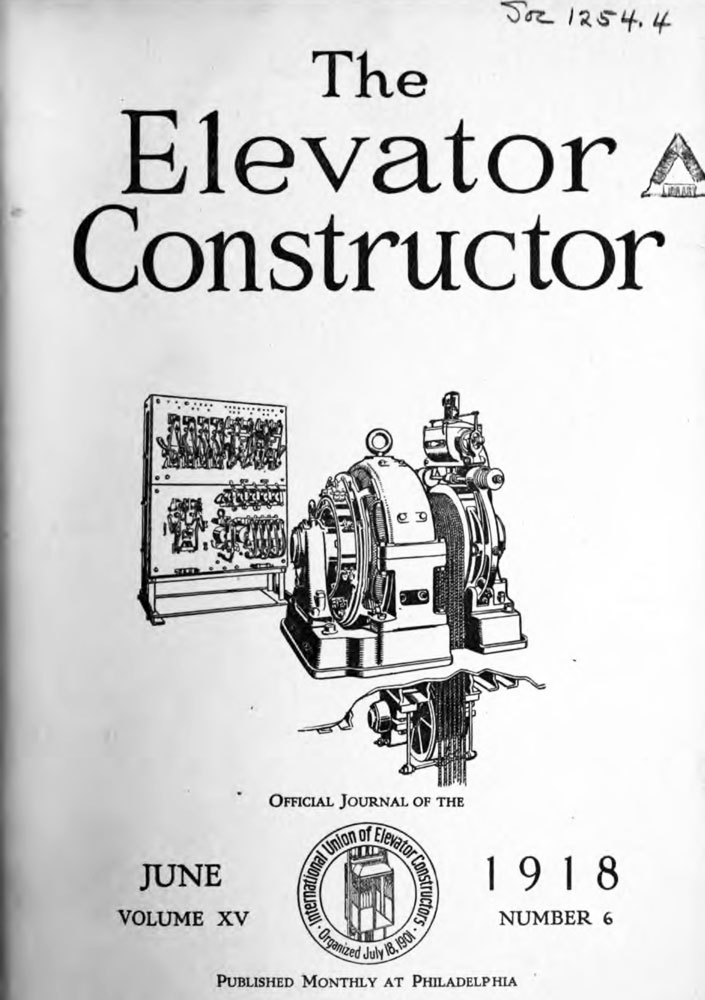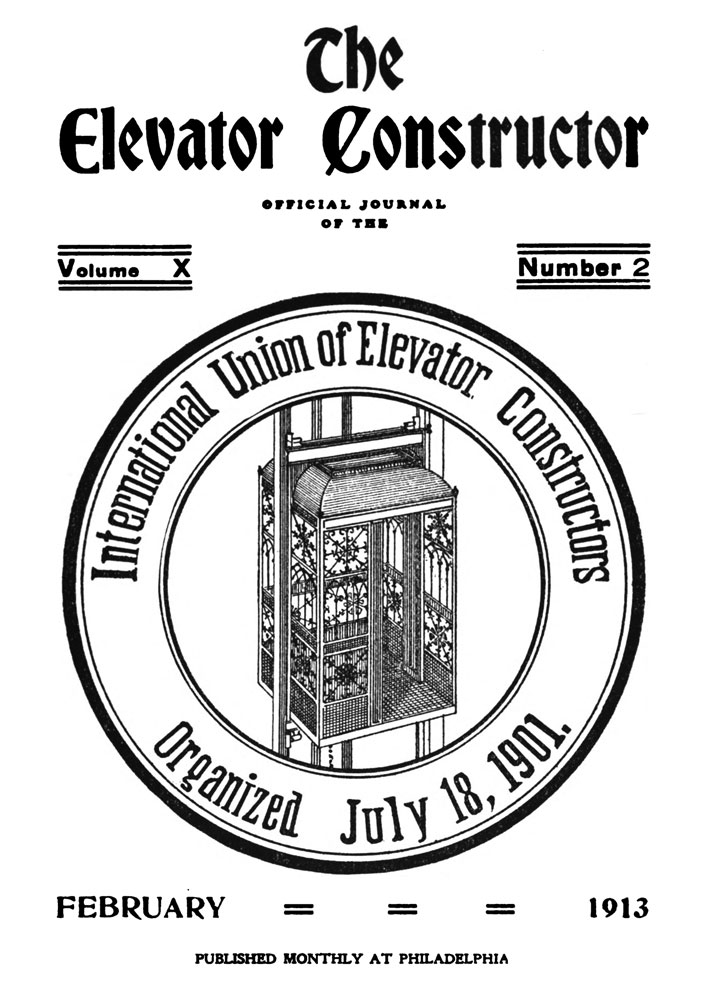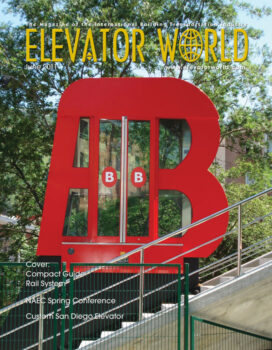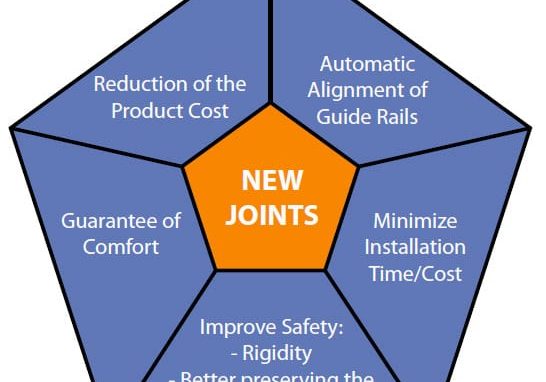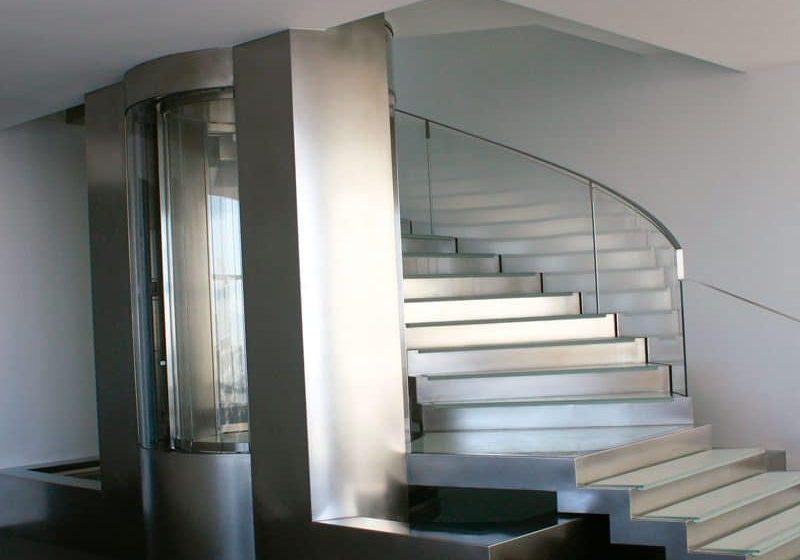A brief look at a pioneering magazine during its first years in publication
The International Union of Elevator Constructors (IUEC) was founded on July 18, 1901. Two years later, in November 1903, the new union launched the first monthly publication that addressed the world of vertical transportation: The Elevator Constructor. This article provides ELEVATOR WORLD readers a brief look at this pioneering magazine as it existed in its first years of publication.
The new publication was devoted to providing labor-related news. It featured numerous articles about the developing labor-union movement in the U.S. and was devoted to the interests of elevator builders or constructors. As stated in the inaugural issue by Henry Snow (the magazine’s first editor), IUEC produced the publication “with the earnest hope that painstaking effort and intelligent, conscientious attention to the interests of our craft in particular, and organized labor in general, shall make it a potent factor in the list of industrial papers and journals of trades.” He also declared that “up-to-date knowledge and ability ensures better work and better pay, and increases the mental and social status of the craftsman.”
The first issue also featured an editorial by former IUEC General Secretary-Treasurer William Havenstrite in which he urged union members to:
“. . . strive to make our journal as valuable as possible to its readers. . . by means of instructive drawings, practical questions, and by a system of quizzing for the purpose of drawing out and exciting the interest of members to take part in writing for the Journal. . . . For instance, how to. . . plumb a shaft; how to set the lines for a set of rails; how to wire a motor (etc).”
Havenstrite also promised readers that in the December 1903 issue he would “offer some practical problems in hydraulics in its application to elevator service.” He also encouraged others to submit articles, noting that “some of our friends in the west, where elevators of the electric type are almost exclusively used, may offer us problems in electricity in its application to elevator service.” True to his word, Havenstrite’s next article addressed the fundamentals of hydraulic system design and included several practical problems, illustrated by the following example: “The sur-face of the water in an open tank is 100 feet above the ground. A pipe 6 inches in diameter is connected to the bottom of the tank, and extends to the ground. What is the discharge, in gallons, per minute?”
In addition to articles intended to enhance or further the education of union members (in 1904, the magazine published a series on basic mathematics), it also occasionally featured articles on new or innovative elevator systems. The first of these appeared in the inaugural issue and described and illustrated J.W. Reedy Co.’s new “Twentieth Century Type” elevator. The elevator featured a unique twin-drum traction machine, which had been designed (and was later patented) by Hugo W. Forslund. The August 1904 magazine printed a paper titled “Electric Elevators,” which Frederic E. Town, superintendent of Construction for Otis, had read before the Modern Science Club of Brooklyn. The paper provides a thorough description of the mechanical and electrical operation of a typical electric traction elevator.
A very different scheme was discussed in a June 1905 article titled “A Curiously Roped-Up Elevator.” This article addressed the Fraser Electric Elevator (referred to in the article as the Fraser differential elevator). This remarkable machine utilized two electric motors that ran continuously and in opposite directions. The motors were connected to a rheostat controller in the car, which was connected to a solenoid located at the top of the shaft that controlled a brake. When both motors ran at the same speed, the elevator would remain stationary. To raise or lower the elevator, the operator simply used the rheostat to increase or decrease the speed of one of the motors; the change in speed caused the traveling pulleys to move, thus moving the car (EW, November and December 2004).
In addition to providing readers with up-to-date labor and industry news, The Elevator Constructor also published one of the first histories of vertical transportation. The December 1907 issue included an illustrated article by William Havenstrite that described an elevator safety designed by British inventor Hugh Baines in 1856: “Improved machinery or apparatus to be applied to hoisting and other lifting machines,” which was a safety device designed to prevent the car from falling down the shaft. In fact, the design was similar to Elisha Otis’ famous rack and pawl displayed in 1854 and patented in 1861. Havenstrite concluded this article by stating:
“My next article, beginning in the January issue, will be the first in a series of historical articles on elevators, beginning long before the Christian era, and, if possible, tracing them down to the present year.”
Unfortunately, the editions of The Elevator Constructor reviewed for this article did not include all 12 months for 1908. However, even a partial review of Havenstrite’s efforts (parts three, four, five and eight were examined) reveals a remarkable (and slightly eccentric) history of elevator technology. In the articles concerning the late 1700s and early 1800s, Havenstrite apparently relied heavily on early British patents, as well as a collection of early engineering books. The articles are well illustrated and are de-serving of additional attention. (I am currently attempting to assemble the full series for further review and study.)
It was not, however, only through its contents that the magazine sought to influence its readers. When The Elevator Constructor first appeared in November 1903, the cover design proudly featured IUEC’s emblem, which had been designed by Snow. The emblem was composed of an elevator car contained within a circle. In fact, the car used by Snow was identical to that which appeared in an 1898 catalog for Hale Elevator Co. Chicago. This image would have been readily available to printers in Chicago and was well known by Snow, as he lived and worked in the city.
In 1907, Snow retired, and the editorship passed to William Young of Philadelphia. In 1913, Young updated the cover and union emblem with a new and decidedly more modern car design. The replacement of Snow’s late 19th-century image with a more contemporary one marked the beginning of a trend that continued over the next several years. In 1916, the union emblem on the magazine cover was reduced in size and centered along the cover’s bottom edge. In it, its former central location was a drawing of a traction-elevator engine – an image that reflected contemporary elevator technology. In 1918, this drawing was updated, and a controller was added to more fully represent the complexity of the modern elevators built and maintained by union members.
The Elevator Constructor provides a wonderful insight into the elevator industry of the early 1900s. The magazine featured articles on labor unions, the benefits and necessity of organized labor in the U.S. and abroad, reports and membership information from IUEC chapters, feature articles culled from a wide range of sources on interesting aspects of American life and history, as well as sections devoted to technical, educational and historical articles concerning elevator design, operation and construction, and industry humor. Many of these early magazines are now available through Google Books, and EW readers interested in the beginnings of the IUEC and elevator history will find them to be a unique source of information.
Get more of Elevator World. Sign up for our free e-newsletter.


